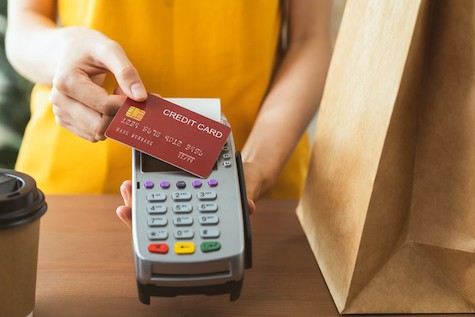
.
One of these key skills is learning how to deal with debt responsibly. Researchers from Cambridgei University found that children develop financial understanding when they have their own personal ‘economic experiences’. That means it’s particularly helpful for kids to have the opportunity to handle some money themselves. But should you give your teenager a credit card?
Pre-paid, debit or credit?
You might like to start with a pre-paid card or a debit card, so there’s a limit on what they can spend. Set the rules on what it can be used for and how much they can spend. If they manage the process well, and if you’re confident that they’re responsible enough, you could give them a credit card (which would be a supplementary card connected to your own, as children under 18 cannot have their own card).
Understanding the difference between spending with a debit card, which is linked to a bank account, and borrowing on a credit card is an important money lesson.
Before you give your teen a credit card, take the time to have a conversation about credit card fees, interest rates, and how spending irresponsibly can give you a bad credit rating, which is bad news for their future. Be clear that they will be responsible for all expenditure on the card - if they can’t afford it with cash, they shouldn’t put it on the credit card.
Rules, limits and know-how
Giving a teenager a credit card may seem risky or even irresponsible, but it can be a great teaching tool if the right conversations, rules and limits are put in place.
Before you give your teen a card, be sure to speak to them about how it works, how to be responsible with it and how to avoid financial trouble, including:
-
How interest works - it’s important that they understand that a credit card is like a loan and if they don’t pay it back on time, they’ll be charged interest. Run an interest calculation with them so they understand how much they could be up for.
-
Paying it off in full every month - show your teen a credit card statement and explain that if they only pay the minimum amount, they’ll still be charged interest. Explain the importance of paying off the full amount every month.
-
Paying on time - show them where they can find the due date for payments and help them to set up reminders to pay on time every month to avoid interest.
-
Avoid overspending - teach your teen to keep track of their spending, and to never spend more than they earn. Use the credit card’s app to keep a tally on spending. To keep track of your teen’s progress, see if your credit card allows you to set up alerts whenever your teen makes a purchase, so you can monitor their spending.
-
Start with a credit limit lower than they earn – it’s a good idea to start with a credit limit that is not more than what they earn in a month. For example, setting a low limit for a teen may be $500 maximum so they can consistently pay it off at the end of each month.
Understanding ‘buy now, pay later’ services
The growing popularity of ‘buy now, pay later’ services such as Afterpay, Openpay and zipPay means it pays to help your teen understand how they work, and what the risks are.
These services allow shoppers to buy a product, take it home and pay for it in instalments via an online ‘buy now, pay later’ account, which deducts your preferred debit or credit card.
These services can be very handy if you have available funds and can pay on time. However, if you don’t, little debts stemming from things like late fees can quickly snowball into bigger debts, which can have various repercussions. For this reason, it’s important that your teenagers understand the need to have a budget in place when it comes to spending, so they don’t get in over their heads. Like credit cards, it’s wise not to spend more than you have.
Added to that, while the buy now, pay later provider might not charge interest on your purchase, you may still have to pay interest to your credit card provider if you don’t pay the full amount owing on your credit card by the due date.
It’s also a good idea to explain to your teen the potential long-term impact that using these services can have on their credit rating. While buy now, pay later services might not check their history, they’re still able to report any black marks against a person to credit reporting agencies, which could make it hard to borrow money in future.
Leading by example
While knowing the ins and outs of debt is important, one of the most powerful ways to help your kids develop healthy money habits is to lead by example. Our ideas about money are formed in our childhood, so if your kids see you living with healthy financial habits, they’re more likely to form those habits themselves.
If you’d like to discuss this topic a little further, call us today.
©AWM Services Pty Ltd. First published May 2020
| 




